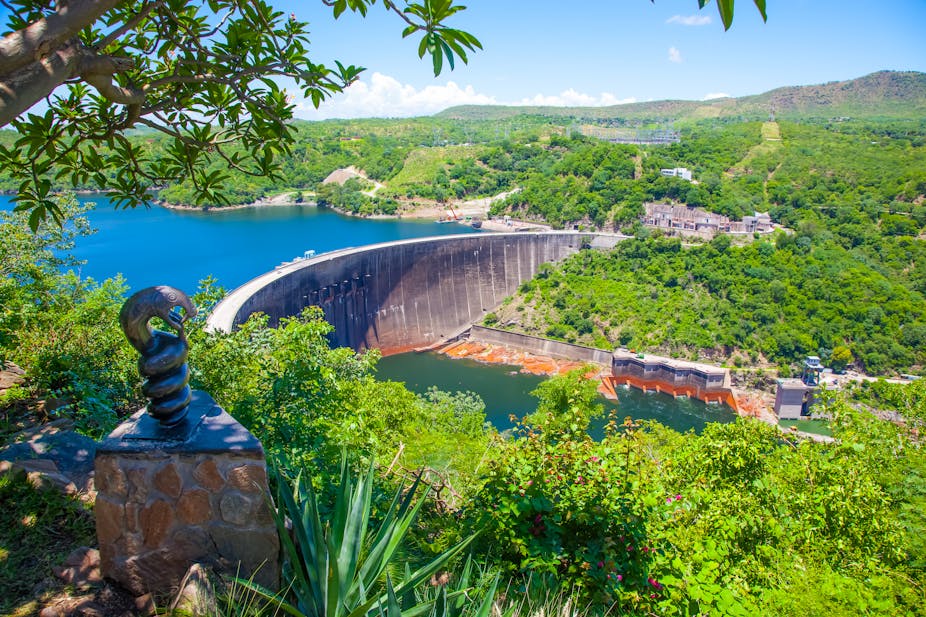Inadequate infrastructure is widely recognised to be holding back Africa’s development and lowering the quality of life of its citizens. The traffic jams of Nairobi, the power cuts of Nigeria or the water shortages that currently afflict Harare and Bulawayo are some of these.
The same is true in fast-growing regions of Latin America and many parts of Asia. It is widely agreed from Addis Ababa to Brasilia, New Delhi and beyond that infrastructure investment is a priority.
But what kind of infrastructure is needed? Developed countries that enjoy a legacy of decades of infrastructure investment are trying new approaches. Since their cities and populations are growing slowly, their primary concern is now simply to maintain and improve what is already in place and make it more sustainable.
So, there is growing interest in using what they call green infrastructure – such as natural systems like wetlands – to provide services such as water storage and treatment.
But problems arise when societies believe that their own preferences should be the rules that govern others. This is particularly evident in the field of water, where the desire to improve the aquatic environment has seen many, often expensive, innovations promoted – some of which work and others which fail.
The push for green infrastructure isn’t benign
The preferences of developed countries on what the focus of infrastructure development should be are sometimes enforced through hard instruments. That Europe and the US are major providers of aid has enabled them to impose policies on poorer countries. One example is that they have prevented dams from being built in countries where they were badly needed.
As countries have become less dependent on aid and can access funds from alternative sources such as China, influence is being exerted through different channels. Scientific research is one such soft channel.
Because the research budgets of the rich countries are many times larger than those of developing countries, they tend to determine what subjects are researched and from what perspective. And, since researchers are measured by whether they publish in international journals, they have a strong incentive to produce work acceptable to rich world editors.
So, the promotion of green infrastructure as an alternative to traditional concrete and pipes, known as grey infrastructure, is not as benign as many people think.
For this reason, colleagues from India, Mexico and Spain and I recently joined a debate to contest the notion that green infrastructure could somehow replace grey infrastructure. We showed that such approaches could simply not meet the needs of the developing world’s fast growing societies.
Some efforts make sense, others not
There is sound logic to some of the solutions that developed countries have come up with to solve their pressing environmental problems. For example, prioritising the development of public transport in London is perhaps the only way the city could save itself from its own success.
Scaling back economic activity to give more room to the rivers in flood-prone regions of the Netherlands is also logical since their intensified agriculture has moved into barns and greenhouses and needs less space.
But the logic behind other initiatives make less sense. For Germany to close all its nuclear power stations and then increase the amount of coal fired electricity generated is, politely put, puzzling.
In London, a plan to divert the city’s sewerage into the huge 30km Thames Tideway tunnel is going to increase the cost of water for each household by around $200 per year with no obvious benefit.
In the 1990s, Australia and Spain both decided that they did not want to build new dams or transfer water from one river basin to another. When they were hit by long-term droughts and cities began to run out of water, they panicked. They went on to spend billions on desalination plants. Before the plants were ready, rain fell and almost all the plants have been mothballed.
In the US, there is a strong movement to remove dams and let rivers run free. This is a remarkable turnabout from middle of the 20th century when iconic folk singer Woody Guthrie wrote a song about the hydroelectric dams that had enabled the Allies to defeat Nazi Germany. It was inviting the Columbia river to flow on to sea, with the condition that:
… while you’re rambling, river, you can do some work for me.
A plea to the green idealists in the north
We object to the notion that countries which have completely transformed their watercourses and landscapes, destroyed their forests and decimated their wildlife should be trying to prevent developing countries from charting their own development path. The US’s 2014 budget actually had a clause instructing the US government’s members of the World Bank board to vote against any proposals for new dams.
We know from the experience of North America and Europe that it is possible to create new physical environments that are pleasant to live in and meet peoples’ needs. So our plea to the green idealists from the north is to recognise that we are in an Anthropocene age.
Developing countries are building new environments which must meet the needs of their present and future generations. We need to ensure that these meet peoples’ aspirations within an altered but sustainable and socially acceptable ecological framework.
But every society should be allowed to make its own decisions, in accordance with its own preferences, so long as they do not have a negative impact beyond their borders.

